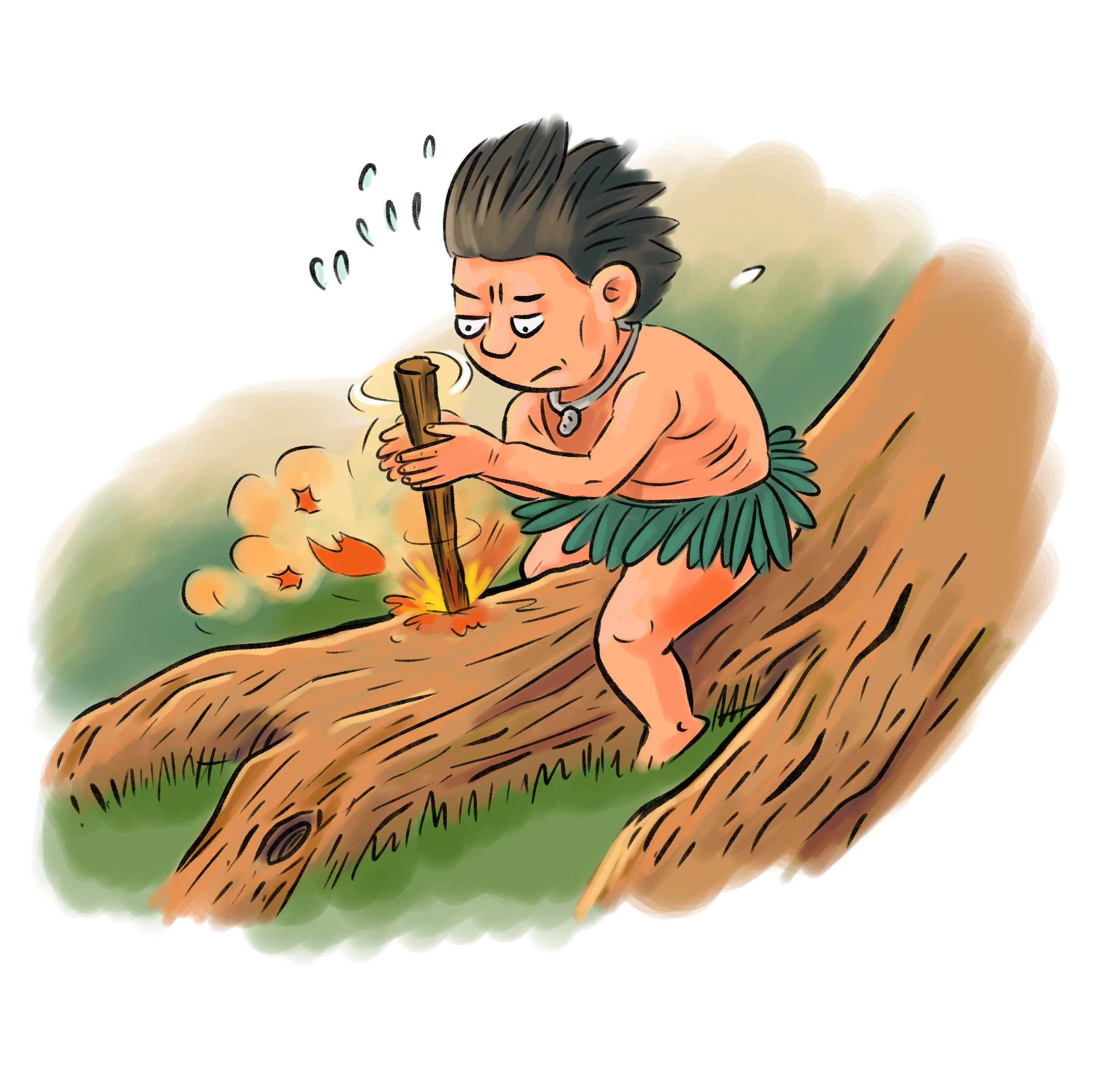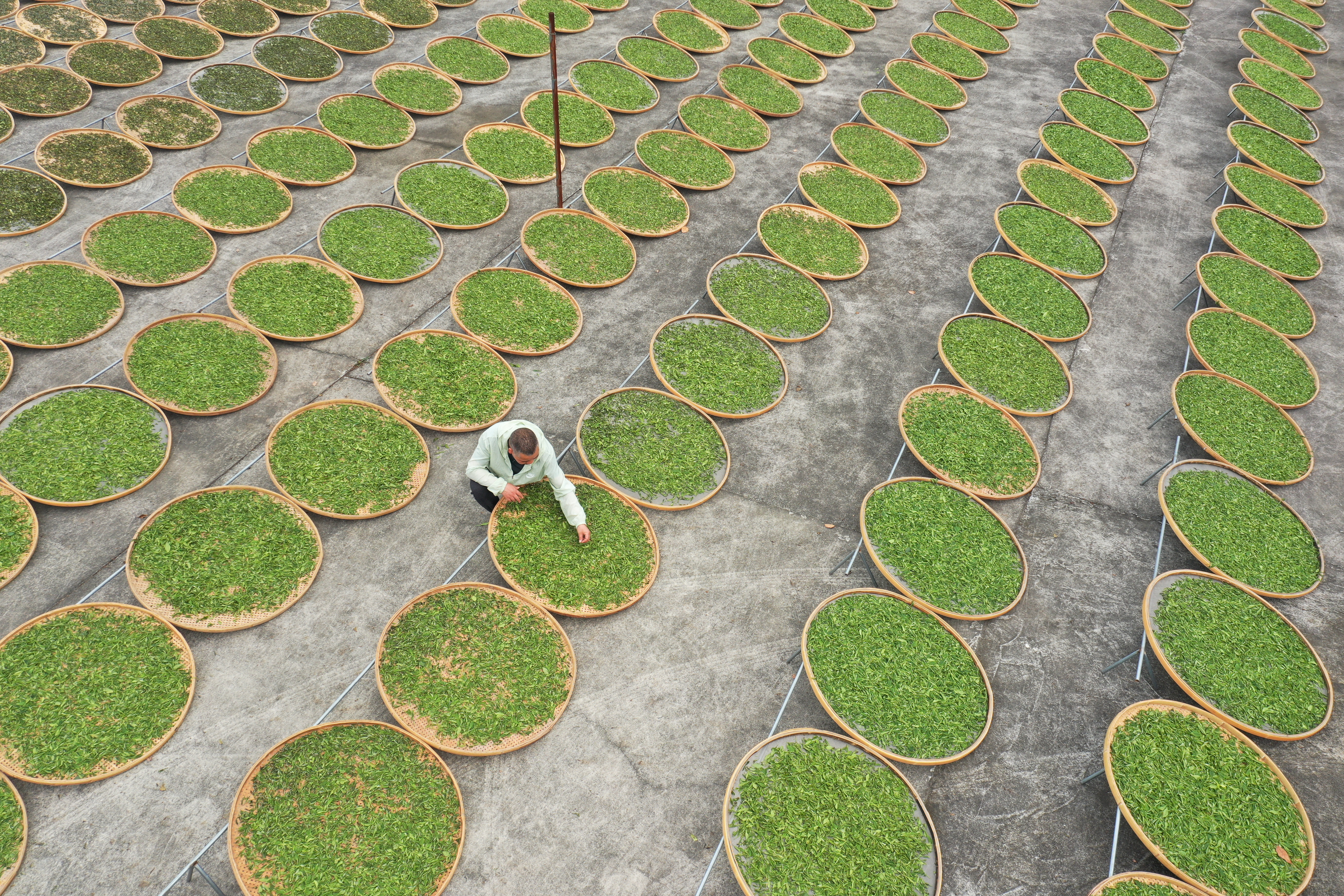The Spark of Civilization

A cartoon picture shows that a man is drilling wood for fire. (PHOTO:VCG)
By BI Weizi
Drilling for fire means rubbing or drilling a hardwood stick against another piece of wood to make fire by friction. The invention of drilling for fire comes from ancient Chinese mythology.
In ancient times, the area around Shangqiu in Henan Province was a forest, a tribe lived there and hunted for wild animals. Inspired by the sparks that appeared when birds were pecking trees, a man named Suirenshi tried drilling wood against wood to create a spark and start a fire. Since then, humankind has learned to start a fire, using it for many purposes, including to cook food and as lighting, heating and smelting. With fire, human life entered a new era.
In order to do a good job of using drilling for fire, it is necessary to have a certain understanding of prehistoric tools, methods and technologies. According to the development level of prehistoric productivity, experts surmise that the fire tools at that time were mainly made of bamboo and wood. And in 1980, two pieces of wooden products with strange shapes were unearthed at the Subeixi site in Shanshan County, Xinjiang Uygur Autonomous Region. These relics, consisting of a drilling rod and drilling board, were considered by scholars to be the fire tools used by human beings more than 2000 years ago.
While the Suirenshi appears to represent one person, he in fact represents all the working people who contributed to creating fire, perhaps a composite of several people, or more likely, he represents a clan.
After the discovery of fire, people could readily use fire to cook food, finally advancing from eating raw animal flesh, and providing conditions for primitive people to gather. Fire marked a great step forward in human civilization.

